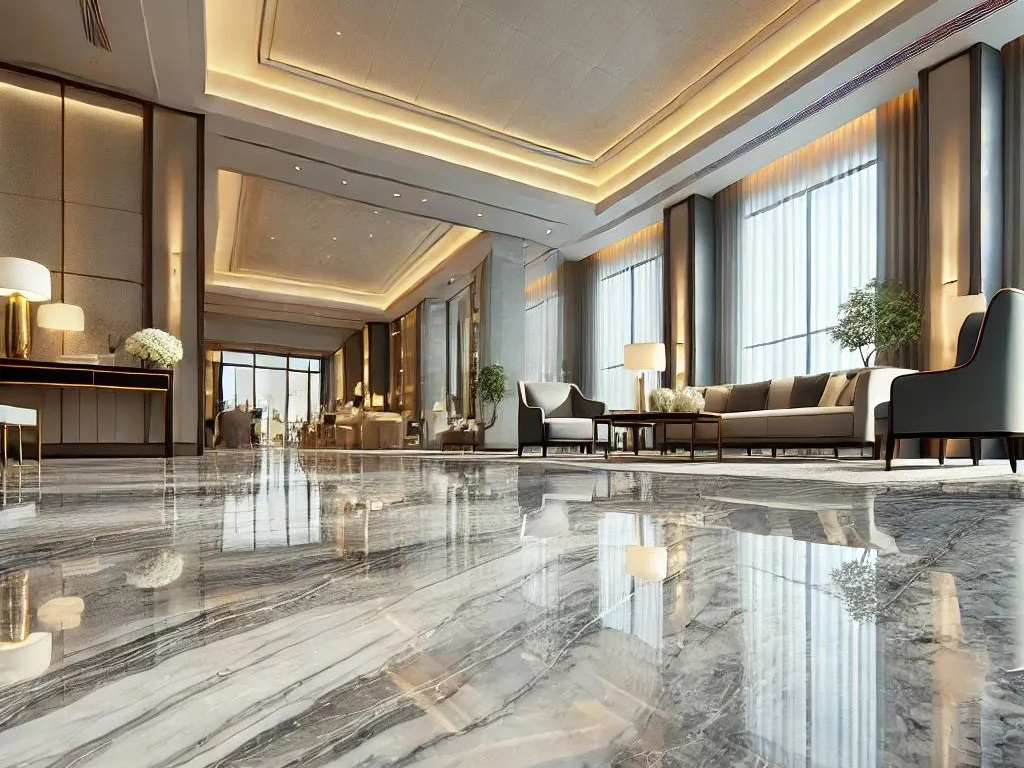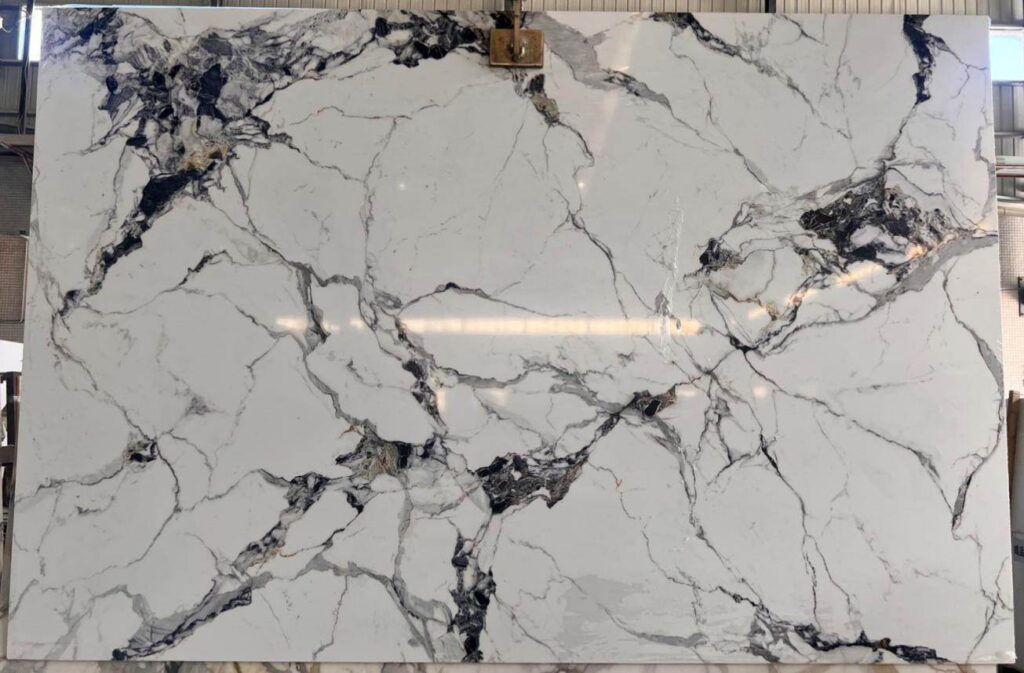WELCOME TO KINGHOME
Get A Free Quote
We will get back to you within 8 hours

In modern society, the update and replacement of new building materials will only become faster and faster. As property cleaning practitioners, if we are cut off from information, we often have no time to attend to it or even be caught off guard. It has only been a short two or three years since microcrystalline stone, as a new type of building material, has been recognized and accepted by people. Due to the lag in information channels and the process of understanding and developing new things in the domestic property cleaning and maintenance market, currently, in domestic property cleaning, due to the lack of correct understanding of microcrystalline stone and the inability to obtain effective maintenance agents, the originally magnificent microcrystalline stone floors are fading day by day under people’s trampling, just like flowers lacking moisture. This also indirectly causes microcrystalline stone, this emerging building material, to bear the bad reputation of being “difficult to maintain” or even “impossible to maintain”.

However, natural resources are limited. Just as composite wood flooring replaces solid wood flooring, artificial stones such as microcrystalline stone replacing natural stones is also an inevitable trend of social development. Moreover, with the improvement of social groups’ environmental awareness and their requirements for living quality, the application of emerging materials like microcrystalline stone in buildings will only increase. Therefore, it is extremely necessary for us to timely learn about microcrystalline stone maintenance.
I.Understanding of Microcrystalline Stone
Microcrystalline stone is a composite solid material containing a large number of microcrystals and a glass phase. It is produced by using ordinary glass raw materials, waste glass, metal ore sand, titanium ore tailings, river sand, or other raw materials containing silicon, aluminum, and calcium as main raw materials, accurately formulating the batch according to the composition ratio of basic glass, and controlling crystallization during the heating process. It is also known as microcrystalline glass, jade crystal, crystal stone, crystallized glass, microcrystalline ceramic, etc.; it integrates the characteristics of both glass and ceramics. Due to its advantages such as dense structure, high strength, freeze resistance, non-water absorption, erosion resistance, as well as clear texture, bright color, small color difference, and resistance to fading in appearance, microcrystalline stone has become one of the new materials in numerous building decoration materials, and its performance exceeds that of many traditional materials. According to the manufacturing process, it is classified into composite microcrystalline stone (with a 3 – 5mm layer of microcrystalline glass sintered on ceramic tiles) and full-body microcrystalline stone.

II. Misconceptions about Microcrystalline Stone Maintenance
1.Microcrystalline stone requires no maintenance.
Microcrystalline stone features high density, great strength, and ultra-high gloss (over 92°). It can maintain an ideal appearance even without maintenance for months, creating an illusion that no upkeep is needed. Regret only sets in when scratches appear and gloss fades. Although quartz sand (SiO₂) is used as the raw material, the high-temperature and high-pressure firing process completely disrupts the molecular structure of quartz, altering the physical properties of SiO₂. As a result, microcrystalline stone has a Mohs hardness of around 6—lower than the hardness of natural sand (Mohs hardness 7). Thus, frequent foot traffic causes irreversible scratches.
2.No effective maintenance methods exist for microcrystalline stone.
In traditional stone care, crystal hardening powders/agents (also called crystal face agents or vitrification agents) are commonly used for daily polishing. In essence, these are all polishing agents (in powder or liquid form), whose main components typically include chromium oxide (Cr₂O₃), white corundum (MI or J0), aluminum oxide (Al₂O₃), and oxalic acid (COOH₂). They also contain additives like active siloxanes, high-quality paraffin, and synthetic resins for lubrication, brightness, and polishing.
Why do these products fail on microcrystalline stone?
①Natural stones like marble (chiefly CaCO₃) and granite (aluminosilicate-based, with Al₂O₃ and SiO₂) react with these agents: For example, oxalic acid (COOH₂) converts marble’s CaCO₃ into harder, more stable calcium oxalate, yielding a polishing effect. However, microcrystalline stone is composed of pure SiO₂—completely different from natural stones.
②The abrasives in traditional polishing agents are not hard enough to smooth scratches on microcrystalline stone (whose hardness exceeds that of the agents’ components). Additionally, microcrystalline stone’s dense structure lacks capillaries, so the agents cannot penetrate or adhere, causing any temporary shine to fade rapidly.
Since traditional “polishing-centric” maintenance fails, new specialized agents must be developed.
3.Frequent refurbishment of microcrystalline stone.
Due to the ineffectiveness of traditional agents, refurbishment becomes a last resort. However:
-Microcrystalline stone may contain air bubbles formed during firing. When these bubbles burst, they create “pores” (more prominent in low-quality products). Diamond grinding discs used in refurbishment often leave “pits” on the surface, ruining the appearance.
-For composite microcrystalline stone (with only a 3–5mm microcrystalline glass layer on ceramic tiles), refurbishment risks exposing the base tile. Moreover, refurbishment is costly—rarely affordable for average clients.
III. Proper Maintenance of Microcrystalline Stone
1.Daily Cleaning:
The main threat to microcrystalline stone comes from sand and gravel carried on footwear. Therefore, daily cleaning should focus on a dust control system: dry dust mopping for dust removal + a proper floor mat system. Specifically, dust-trapping mats should be laid at the entrances and exits of the premises to prevent hard debris like sand and gravel from abrading or scratching the stone surface.
2.Washing:
The main component of microcrystalline stone—quartz sand (SiO₂)—has extremely stable chemical properties and does not react with acids or alkalis at room temperature. Additionally, its dense structure prevents water-based stains from penetrating. Thus, ordinary neutral detergents are sufficient for cleaning. However, abrasive-containing detergents (such as scouring powder) must be avoided.
Furthermore, its low water absorption rate makes it difficult to dry after cleaning; combined with its smooth surface, this creates a high risk of slipping, posing a safety hazard. It is therefore recommended to clean the stone when there are no guests present, or to use fully automatic floor scrubbers whenever possible.
3.Using Specialized, Proper Maintenance Agents:
To find an effective maintenance solution, the author (a month ago, upon the recommendation of the Cleaning Industry Association) conducted an on-site test of a new Hong Kong-developed care agent—Crystal Shield—on the white microcrystalline stone in the lobby corridor of a hotel at a Guangzhou Entertainment Plaza. Due to long-term lack of effective maintenance and its role as a corridor connecting to a shopping mall, the microcrystalline stone surface here was severely worn and disfigured by heavy foot traffic.
At that time, technical directors from several well-known cleaning and stone care companies in Guangzhou and Foshan (who were present) unanimously agreed that refurbishment was the only way to restore its appearance. Surprisingly, without any refurbishment, after three applications of Crystal Shield, the glossiness of the microcrystalline stone surface increased from 11°to 86°, and the surface seemed to be covered with a layer resembling “green jade.” We all found this result incredible—none of us would have believed it without witnessing it firsthand.
Mr. Li, the representative of Crystal Shield, then explained the principle: “Crystal Shield uses the heat generated by grinding to trigger the room-temperature crystallization of nano-crystal molecules (SiO₂) contained in the agent, forming a crystal protective layer. This allows polished tiles, artificial microcrystalline stone, and granite to be coated with a beautiful ‘crystal coat’—making them shine brilliantly.”
At this point, we all can’t help but marvel at the rapid advancement of technology—progress that moves by leaps and bounds. Our domestic property cleaning peers really need to catch up quickly to match the international standards of cleaning and maintenance.
Author : Li Ziqi Written in 2007